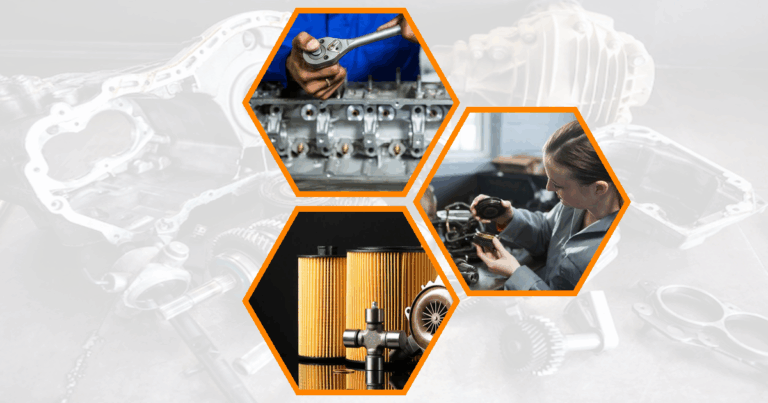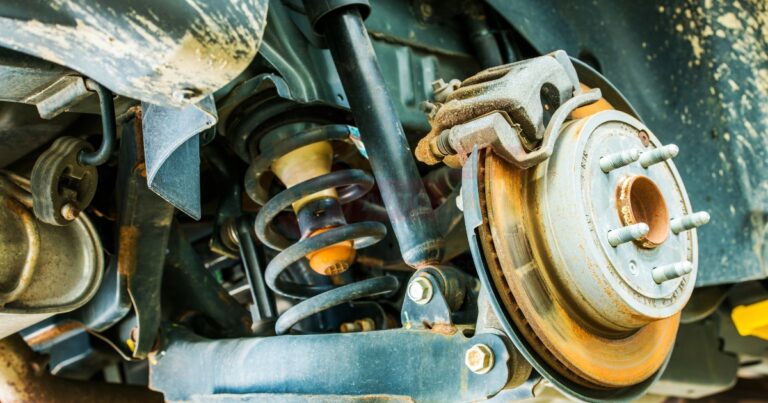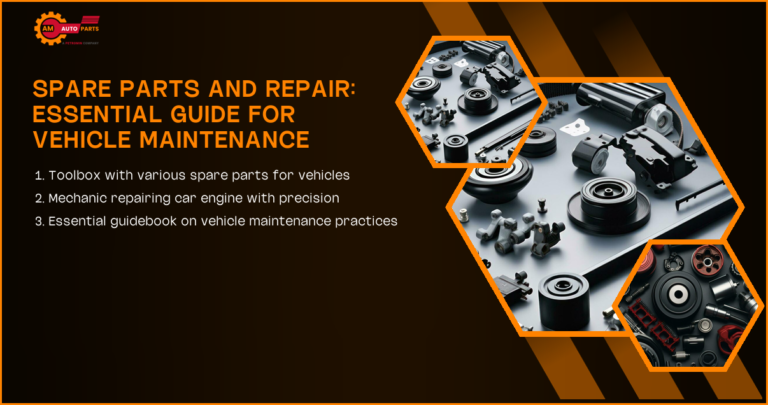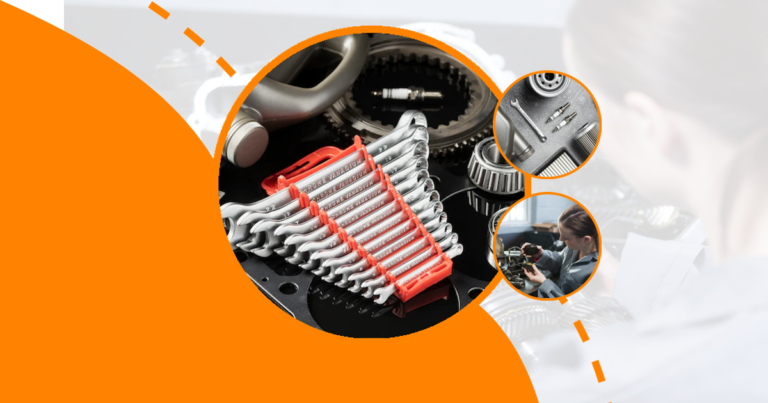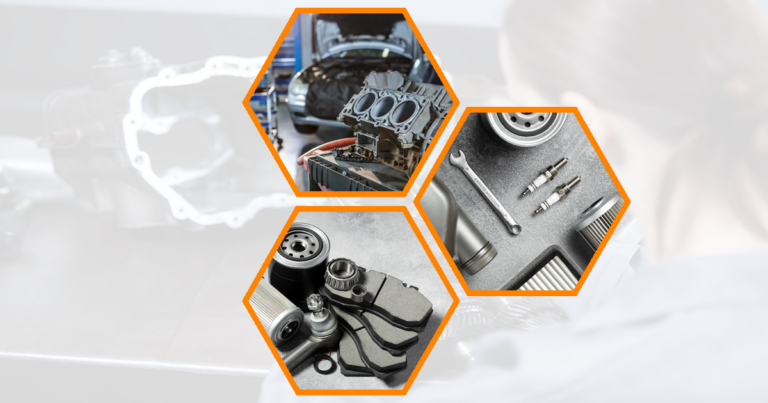Automotive Supply Chain Efficiency, Optimization, and Best Practices
In today’s fast-paced world, the automotive supply chain is a complex network that requires efficiency and optimization to meet the demands of the industry. By implementing best practices, companies can streamline operations, reduce costs, and improve overall performance. This article explores the key components of an efficient automotive supply chain, the challenges faced, and the best practices for optimization.
Automotive Supply Chain Landscape
The automotive supply chain is a vast and intricate system that involves multiple stakeholders, including manufacturers, suppliers, and logistics providers. Understanding this landscape is crucial for identifying areas for improvement and implementing effective strategies.
Key Components of an Efficient Automotive Supply Chain
An efficient automotive supply chain relies on several key components, including inventory management, logistics, and supplier relationships. Each component plays a vital role in ensuring the smooth flow of materials and products from suppliers to manufacturers and ultimately to customers.
- Inventory Management : Effective inventory management ensures that the right parts are available at the right time, reducing delays and minimizing costs.
- Logistics : Streamlined logistics processes help in the timely delivery of products, reducing lead times and improving customer satisfaction.
- Supplier Relationships : Strong relationships with suppliers ensure a reliable supply of quality components, reducing the risk of disruptions.
Challenges Facing Modern Automotive Supply Chains
Modern automotive supply chains face numerous challenges, including fluctuating demand, regulatory changes, and technological advancements. These challenges require companies to be agile and adaptable to maintain efficiency.
- Fluctuating Demand : Changes in consumer preferences and economic conditions can lead to unpredictable demand, making it difficult to manage inventory and production schedules.
- Regulatory Changes : Compliance with environmental and safety regulations can impact supply chain operations, requiring companies to adapt quickly.
- Technological Advancements : The rapid pace of technological change necessitates continuous investment in new tools and systems to stay competitive.
The Impact of Global Events on Automotive Supply Chains
Global events, such as pandemics and geopolitical tensions, can have a significant impact on automotive supply chains. These events can disrupt production, delay shipments, and increase costs, highlighting the need for resilient supply chain strategies.
- Pandemics : Health crises can lead to factory shutdowns and transportation delays, affecting the entire supply chain.
- Geopolitical Tensions : Trade disputes and tariffs can increase costs and create uncertainty, impacting supply chain planning.
- Natural Disasters : Events like earthquakes and hurricanes can disrupt supply chains by damaging infrastructure and delaying shipments.
Implementing Just-in-Time (JIT) Inventory Management in Automotive
Just-in-Time (JIT) inventory management is a strategy that aims to reduce waste and improve efficiency by receiving goods only as they are needed in the production process. This approach can significantly enhance the efficiency of automotive supply chains.
Benefits of JIT for Automotive Manufacturers
JIT offers several benefits for automotive manufacturers, including reduced inventory costs, improved cash flow, and increased flexibility. By minimizing excess inventory, companies can allocate resources more effectively and respond quickly to changes in demand.
- Reduced Inventory Costs : JIT reduces the need for large inventories, lowering storage costs and minimizing waste.
- Improved Cash Flow : By purchasing materials only when needed, companies can better manage their cash flow and invest in other areas of the business.
- Increased Flexibility : JIT allows manufacturers to quickly adapt to changes in demand, improving responsiveness and customer satisfaction.
Overcoming JIT Implementation Challenges
Implementing JIT can be challenging, as it requires precise coordination and communication with suppliers. Companies must address potential issues, such as supplier reliability and production scheduling, to ensure successful implementation.
- Supplier Reliability : Ensuring that suppliers can deliver materials on time is critical for JIT success. Building strong relationships and setting clear expectations can help mitigate risks.
- Production Scheduling : Accurate production scheduling is essential to avoid delays and ensure that materials are available when needed.
- Communication : Effective communication with suppliers and internal teams is crucial for coordinating JIT processes and addressing any issues that arise.
Case Study: Successful JIT Implementation in Automotive
A leading automotive manufacturer successfully implemented JIT by partnering with reliable suppliers and investing in advanced scheduling software. This approach reduced inventory costs by 20% and improved production efficiency, demonstrating the potential benefits of JIT in the automotive industry.
Benefits of JIT | Description |
Reduced Inventory Costs | Lowers storage costs and minimizes waste |
Improved Cash Flow | Better management of cash flow and investment in other areas |
Increased Flexibility | Quick adaptation to changes in demand |
Leveraging Advanced Technology for Supply Chain Optimization
Advanced technology plays a crucial role in optimizing automotive supply chains. By leveraging tools such as AI, IoT, and blockchain, companies can enhance efficiency, improve forecasting, and ensure traceability.
AI and Machine Learning in Automotive Supply Chain Management
AI and machine learning can revolutionize supply chain management by automating processes, predicting demand, and optimizing operations. These technologies enable companies to make data-driven decisions and improve overall efficiency.
- Process Automation : AI can automate routine tasks, freeing up resources for more strategic activities.
- Demand Prediction : Machine learning algorithms can analyze historical data to forecast demand, helping companies plan production and inventory more accurately.
- Operational Optimization : AI can identify inefficiencies and suggest improvements, enhancing supply chain performance.
IoT and Predictive Analytics for Inventory Forecasting
The Internet of Things (IoT) and predictive analytics provide real-time insights into inventory levels and demand patterns. These technologies enable companies to optimize inventory management and reduce the risk of stockouts or overstocking.
- Real-Time Insights : IoT devices can monitor inventory levels and provide real-time data, allowing for more accurate forecasting.
- Demand Patterns : Predictive analytics can identify trends and patterns in demand, helping companies adjust inventory levels accordingly.
- Risk Reduction : By optimizing inventory management, companies can reduce the risk of stockouts or overstocking, improving customer satisfaction.
Blockchain Technology for Enhanced Traceability
Blockchain technology offers enhanced traceability and transparency in the automotive supply chain. By providing a secure and immutable record of transactions, blockchain can improve trust and accountability among stakeholders.
- Secure Transactions : Blockchain provides a secure and tamper-proof record of transactions, reducing the risk of fraud.
- Improved Trust : Enhanced traceability and transparency can improve trust among supply chain partners.
- Accountability : Blockchain ensures accountability by providing a clear record of all transactions and activities.
Streamlining Logistics and Transportation in Automotive Supply Chains
Efficient logistics and transportation are critical for optimizing automotive supply chains. By implementing strategies such as route optimization and cross-docking, companies can reduce costs and improve delivery times.
Optimizing Route Planning and Delivery Schedules
Optimizing route planning and delivery schedules can significantly reduce transportation costs and improve efficiency. By using advanced software and data analytics, companies can identify the most efficient routes and schedules.
- Cost Reduction : Optimized routes and schedules can reduce fuel consumption and transportation costs.
- Improved Efficiency : Efficient route planning can reduce delivery times and improve customer satisfaction.
- Data-Driven Decisions : Advanced software and data analytics enable companies to make informed decisions about routes and schedules.
Implementing Cross-Docking Strategies
Cross-docking is a logistics strategy that involves unloading materials from incoming shipments and loading them directly onto outbound trucks, reducing storage time and costs. This approach can improve efficiency and reduce lead times.
- Reduced Storage Time : Cross-docking minimizes the need for storage, reducing costs and improving efficiency.
- Improved Lead Times : By streamlining the transfer of goods, cross-docking can reduce lead times and improve delivery times.
- Cost Savings : Reduced storage and handling costs can lead to significant cost savings for companies.
Reducing Transportation Costs Through Consolidation
Consolidating shipments can reduce transportation costs by maximizing the use of available space and resources. By combining smaller shipments into larger ones, companies can achieve economies of scale and reduce costs.
- Economies of Scale : Consolidating shipments allows companies to take advantage of economies of scale, reducing costs.
- Resource Optimization : Maximizing the use of available space and resources can improve efficiency and reduce costs.
- Cost Savings : Consolidation can lead to significant cost savings by reducing the number of shipments and associated costs.
Building Resilient Supplier Relationships in the Automotive Industry
Strong supplier relationships are essential for a resilient automotive supply chain. By diversifying sourcing strategies and collaborating with suppliers, companies can reduce risks and improve performance.
Diversifying Component Sourcing Strategies
Diversifying component sourcing strategies can reduce the risk of supply chain disruptions and improve resilience. By sourcing from multiple suppliers, companies can ensure a reliable supply of components.
- Risk Reduction : Diversifying sourcing strategies can reduce the risk of disruptions and improve supply chain resilience.
- Reliable Supply : Sourcing from multiple suppliers ensures a reliable supply of components, reducing the risk of shortages.
- Improved Performance : A diverse supplier base can improve overall supply chain performance and reduce costs.
Collaborative Forecasting and Planning with Suppliers
Collaborative forecasting and planning with suppliers can improve supply chain efficiency and reduce the risk of disruptions. By sharing data and insights, companies and suppliers can align their strategies and improve performance.
- Improved Efficiency : Collaborative forecasting and planning can improve supply chain efficiency by aligning strategies and reducing the risk of disruptions.
- Data Sharing : Sharing data and insights with suppliers can improve decision-making and performance.
- Aligned Strategies : Collaboration with suppliers can ensure that strategies are aligned, improving overall supply chain performance.
Risk Management in Supplier Relationships
Effective risk management in supplier relationships is crucial for maintaining a resilient supply chain. By identifying potential risks and implementing mitigation strategies, companies can reduce the impact of disruptions.
- Risk Identification : Identifying potential risks in supplier relationships is essential for effective risk management.
- Mitigation Strategies : Implementing mitigation strategies can reduce the impact of disruptions and improve supply chain resilience.
- Continuous Monitoring : Continuous monitoring of supplier relationships can help identify and address potential risks before they become issues.
Enhancing Quality Control Measures in Automotive Supply Chains
Quality control is a critical aspect of automotive supply chain management. By implementing advanced inspection technologies and robust quality assurance programs, companies can ensure the delivery of high-quality products.
Implementing Advanced Quality Inspection Technologies
Advanced quality inspection technologies, such as automated inspection systems and AI-powered tools, can improve the accuracy and efficiency of quality control processes. These technologies enable companies to identify defects and ensure product quality.
- Automated Inspection : Automated inspection systems can improve the accuracy and efficiency of quality control processes.
- AI-Powered Tools : AI-powered tools can identify defects and ensure product quality, reducing the risk of recalls and returns.
- Improved Accuracy : Advanced inspection technologies can improve the accuracy of quality control processes, ensuring high-quality products.
Developing Robust Supplier Quality Assurance Programs
Robust supplier quality assurance programs are essential for ensuring the delivery of high-quality components. By setting clear expectations and conducting regular audits, companies can ensure that suppliers meet quality standards.
- Clear Expectations : Setting clear expectations for suppliers can ensure that they meet quality standards.
- Regular Audits : Conducting regular audits of suppliers can ensure that they maintain high-quality standards.
- Continuous Improvement : Continuous improvement of supplier quality assurance programs can enhance overall supply chain performance.
Continuous Improvement Strategies for Quality Management
Continuous improvement strategies, such as Lean Six Sigma, can enhance quality management in automotive supply chains. By identifying and addressing inefficiencies, companies can improve product quality and reduce costs.
- Lean Six Sigma : Lean Six Sigma principles can improve quality management by identifying and addressing inefficiencies.
- Cost Reduction : Continuous improvement strategies can reduce costs by improving efficiency and reducing waste.
- Enhanced Quality : By continuously improving quality management processes, companies can ensure the delivery of high-quality products.
Sustainable Practices in Automotive Supply Chain Management
Sustainability is becoming increasingly important in automotive supply chain management. By reducing carbon footprints and implementing circular economy principles, companies can improve environmental performance and meet regulatory requirements.
Reducing Carbon Footprint in Transportation and Logistics
Reducing the carbon footprint of transportation and logistics is a key aspect of sustainable supply chain management. By optimizing routes and using eco-friendly vehicles, companies can reduce emissions and improve environmental performance.
- Route Optimization : Optimizing routes can reduce fuel consumption and emissions, improving environmental performance.
- Eco-Friendly Vehicles : Using eco-friendly vehicles can reduce emissions and improve sustainability.
- Regulatory Compliance : Reducing carbon footprints can help companies meet regulatory requirements and improve their reputation.
Implementing Circular Economy Principles in Automotive Supply Chains
Implementing circular economy principles, such as recycling and reusing materials, can improve sustainability in automotive supply chains. By reducing waste and conserving resources, companies can enhance environmental performance and reduce costs.
- Recycling and Reusing : Recycling and reusing materials can reduce waste and conserve resources, improving sustainability.
- Cost Reduction : Implementing circular economy principles can reduce costs by minimizing waste and conserving resources.
- Environmental Performance : By adopting circular economy principles, companies can improve their environmental performance and meet regulatory requirements.
Sustainable Sourcing and Supplier Selection Criteria
Sustainable sourcing and supplier selection criteria are essential for improving sustainability in automotive supply chains. By selecting suppliers based on environmental performance and ethical practices, companies can enhance their sustainability efforts.
- Environmental Performance : Selecting suppliers based on environmental performance can improve sustainability in the supply chain.
- Ethical Practices : Choosing suppliers with ethical practices can enhance sustainability efforts and improve reputation.
- Sustainability Goals : Sustainable sourcing and supplier selection criteria can help companies achieve their sustainability goals.
What role does digitalization play in optimizing automotive supply chains?
Digitalization plays a crucial role in optimizing automotive supply chains by enabling real-time data sharing, improving communication, and enhancing decision-making. By adopting digital tools and technologies, companies can streamline operations and improve efficiency. Automotive collaboration advantages Working together in the car industry helps companies share ideas and save money while making better vehicles faster Quality parts sourcing Finding the best pieces to make things work well is what
Wheel guides automobile help cars stay on the right path They make sure vehicles move smoothly and safely on roads Genuine parts verification helps make sure car parts are real and not fake It protects your car from damage caused by using wrong or low-quality parts
Engine components comparison Different engines have various parts that work together and comparing these parts helps us understand how each engine functions and performs Camshaft engine component The
Vehicle oscillation reducers help make car rides smoother They stop the bouncing and shaking that can happen when driving Disc brake analysis helps us understand how well brakes work on vehicles It looks at things like heat friction and wear to make brakes safer and last longer
- Real-Time Data Sharing : Digitalization enables real-time data sharing, improving communication and collaboration among supply chain partners.
- Enhanced Decision-Making : Digital tools and technologies can enhance decision-making by providing accurate and timely information.
- Streamlined Operations : By adopting digital solutions, companies can streamline operations and improve overall supply chain efficiency.
Lean Six Sigma Principles for Automotive Supply Chain Optimization
Lean Six Sigma principles can significantly enhance automotive supply chain optimization by identifying and eliminating inefficiencies. By implementing these principles, companies can improve performance and reduce costs.
Value Stream Mapping in Automotive Supply Chains
Value stream mapping is a Lean Six Sigma tool that helps identify inefficiencies and areas for improvement in supply chains. By visualizing the flow of materials and information, companies can streamline processes and reduce waste.
- Identifying Inefficiencies : Value stream mapping helps identify inefficiencies and areas for improvement in supply chains.
- Process Visualization : By visualizing the flow of materials and information, companies can streamline processes and reduce waste.
- Improved Performance : Implementing value stream mapping can improve overall supply chain performance and reduce costs.
Implementing Kaizen Events for Continuous Improvement
Kaizen events are focused improvement activities that aim to enhance specific processes or areas within the supply chain. By involving cross-functional teams, companies can identify and implement improvements quickly and effectively.
- Focused Improvement : Kaizen events focus on specific processes or areas within the supply chain, enhancing performance.
- Cross-Functional Teams : Involving cross-functional teams can identify and implement improvements quickly and effectively.
- Continuous Improvement : Implementing Kaizen events can drive continuous improvement and enhance overall supply chain performance.
Measuring and Improving Supply Chain KPIs
Measuring and improving supply chain KPIs is essential for optimizing performance and achieving business goals. By tracking key metrics, companies can identify areas for improvement and implement strategies to enhance efficiency.
- Key Metrics : Measuring supply chain KPIs helps track performance and identify areas for improvement.
- Performance Optimization : By improving KPIs, companies can optimize performance and achieve business goals.
- Strategic Implementation : Implementing strategies to enhance efficiency can improve overall supply chain performance.
FAQs
What are the main challenges in automotive supply chain management?
The main challenges in automotive supply chain management include fluctuating demand, regulatory changes, and technological advancements. These challenges require companies to be agile and adaptable to maintain efficiency. By implementing best practices and leveraging advanced technologies, companies can overcome these challenges and optimize their supply chains.
How can automotive manufacturers improve supply chain visibility?
Automotive manufacturers can improve supply chain visibility by adopting digital tools and technologies that enable real-time data sharing and communication. By enhancing visibility, companies can make informed decisions and improve overall supply chain performance. Implementing advanced technologies, such as IoT and blockchain, can further enhance visibility and traceability.
How can automotive companies mitigate supply chain disruptions?
Automotive companies can mitigate supply chain disruptions by diversifying sourcing strategies, building strong supplier relationships, and implementing risk management strategies. By identifying potential risks and developing mitigation plans, companies can reduce the impact of disruptions and maintain a resilient supply chain. Leveraging advanced technologies and best practices can further enhance resilience and performance.


